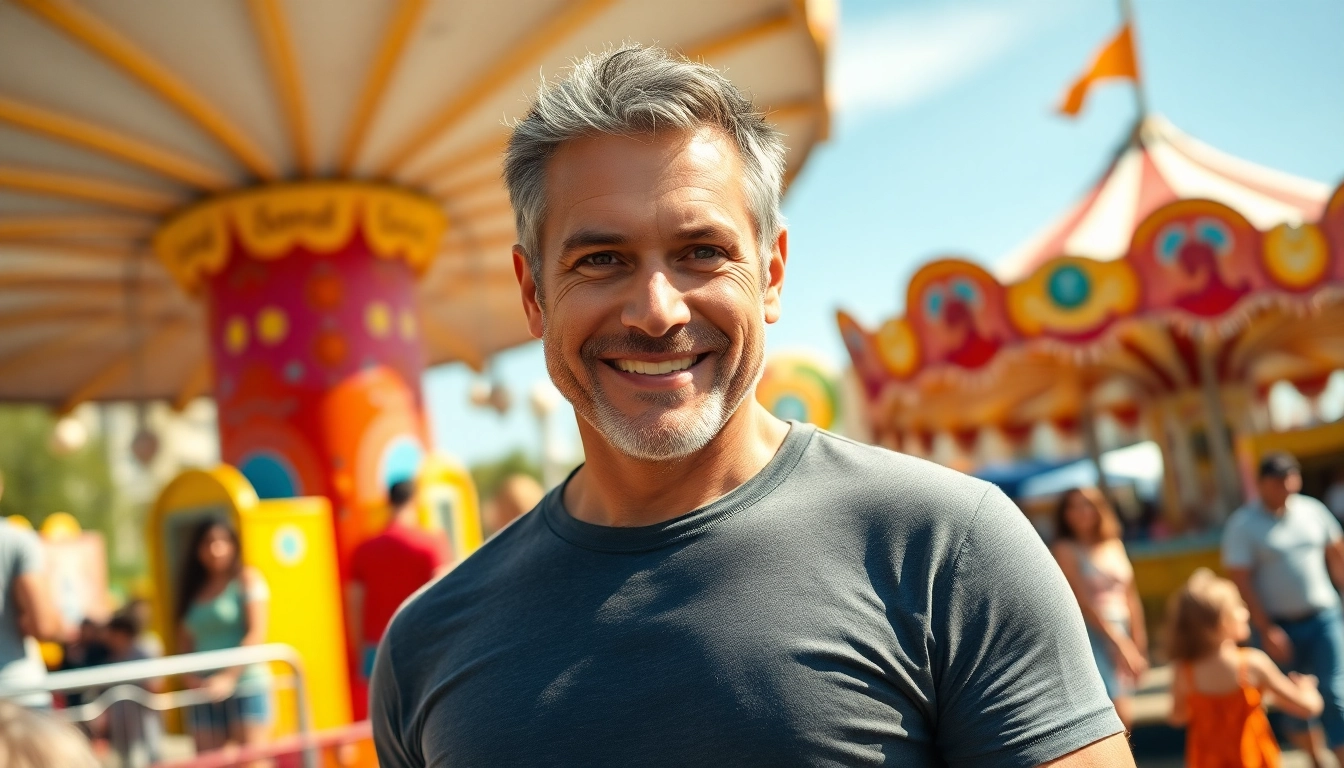Introduction to the DILF Term: Origins and Meaning
The acronym DILF stands for “Dad/Daddy I’d Like to F*ck,” a colloquial and somewhat provocative term that has gained significant traction in contemporary pop culture and internet communities. Unlike its counterpart MILF, which emphasizes an attractive mother figure, DILF focuses on older, mature men who are perceived as sexually appealing, often embodying a mix of masculinity, confidence, and charm. The term does not necessarily require the man to be a father; rather, it highlights a certain allure that comes with age, maturity, and masculinity. This phenomenon has roots in popular culture but has evolved into a multifaceted social and internet-driven phenomenon, influencing perceptions of age, attractiveness, and masculinity across various platforms.
Cultural Popularity: From Movies to TV Shows – Daddy Halsin and Riverdale
The Role of Media in Popularizing DILF
The term DILF, while relatively modern, owes much of its popularity to the entertainment industry, especially movies and television. Films and shows have historically played a role in shaping public perceptions of attractiveness and masculinity, and the DILF archetype is no exception. One notable example is the 2009 movie American Pie Presents: The Book of Love, a film that is part of the larger American Pie franchise. This installment introduces a character known as Rob’s father, who exemplifies the DILF persona—mature, attractive, and charismatic. His character’s portrayal as a desirable older man helped to normalize and popularize the term among audiences, especially younger viewers familiar with the franchise.
Another prominent example is the Netflix series Riverdale, which began airing in 2017. The show features Fred Andrews, played by Luke Perry, a character widely regarded by fans as a quintessential DILF. Fred’s persona as a protective, strong, and attractive father figure resonated with audiences, further cementing the idea that older men can embody both masculinity and sexual appeal. This portrayal challenged traditional notions that attractiveness and desirability are solely reserved for younger individuals, highlighting instead that maturity and life experience can be equally, if not more, attractive.
Daddy Halsin in Baldur’s Gate: A Video Game Icon
Beyond traditional media, the DILF archetype has permeated into popular culture through video games. One notable example is Daddy Halsin from the acclaimed role-playing game Baldur’s Gate III. Halsin is a druid and a protector, characterized by his strength, wisdom, and nurturing personality, which fans have noted resemble the DILF archetype. His appearance and demeanor have led gamers and fans to affectionately refer to him as “Daddy Halsin,” blending admiration with a hint of flirtation. This internet-inspired nickname underscores how the DILF persona extends beyond TV and movies into gaming culture, where fans often create memes, fan art, and discussions around such characters.
The Role of Internet Culture: DILFs of Disneyland and Online Communities
Internet Phenomena and Social Media
The internet has played a pivotal role in the proliferation and normalization of the DILF concept. Social media platforms like Instagram, TikTok, and Reddit host communities and accounts dedicated to celebrating DILFs. One of the most prominent examples is the Instagram account DILFs of Disneyland, which boasts over 300,000 followers. This account shares candid photos of attractive fathers—or men who embody the DILF aesthetic—spending quality family time at Disneyland. These images challenge stereotypes by showcasing that masculinity and attractiveness are not limited by age or social roles. Instead, they highlight a broader cultural shift towards appreciating mature men for their charm, confidence, and parental pride.
Similarly, Reddit hosts the NSFW community r/DILFs, which has nearly 100,000 members. This online forum provides a space for fans and enthusiasts to share photos, stories, and discussions about DILFs from around the world. The community promotes a culture of admiration and acceptance, emphasizing that attractiveness is subjective and that older men can be just as desirable as their younger counterparts. These online spaces have helped destigmatize the term and foster a community that celebrates masculine maturity in all its forms.
The Rise of DILF Content and Its Impact
The internet’s role in popularizing DILFs extends beyond social media. The term has become a popular tag in adult content and is frequently searched in pornographic platforms. This surge in online interest reflects a broader cultural acceptance and curiosity about older, masculine men as sexual beings. It also signifies a shift in societal standards, where attractiveness is no longer solely associated with youth but also with experience, confidence, and maturity.
The Evolution of the DILF Persona in Media and Pornography
From Humor to Mainstream Acceptance
The DILF archetype has evolved considerably since its emergence. Initially, the term was often used humorously or as a playful tease, mainly within niche internet communities or among friends. Over time, however, it has gained mainstream recognition as a valid and even desirable persona. This transition mirrors broader societal changes that challenge traditional ageist stereotypes and promote a more inclusive understanding of attractiveness.
In adult entertainment, the DILF persona has become a popular category and tag, used to market and categorize content aimed at viewers who find older men sexually appealing. The popularity of such content underscores how the archetype has become a staple in adult media, further normalizing the idea that masculinity and attractiveness are not confined to youth.
Representation and Stereotypes
Representation of DILFs in media often emphasizes traits like strength, confidence, nurturing qualities, and a sense of stability. These characteristics appeal to audiences seeking a different kind of attractiveness—one rooted in maturity rather than juvenile allure. However, some stereotypes persist, portraying DILFs as overly serious or stern, which can hinder a nuanced understanding of the archetype. Modern portrayals are increasingly diverse, showcasing DILFs as multifaceted individuals who balance strength with sensitivity, humor, and relatability.
How the DILF Term Influences Modern Masculine Ideals
Redefining Masculinity and Age
The rise of the DILF archetype reflects a broader cultural redefinition of masculinity. Traditional notions often emphasize youth, physicality, and status, but the DILF persona champions qualities like wisdom, stability, and confidence. This shift encourages society to view aging not as a decline but as an evolution that enhances attractiveness and desirability.
This redefinition influences how men perceive themselves and how society perceives older men. It promotes the idea that masculinity is multifaceted and that attractiveness can be cultivated through personality, experience, and self-assurance, regardless of age. This cultural evolution fosters greater acceptance of aging and challenges ageist stereotypes that equate youth with desirability.
Implications for Gender and Cultural Norms
The DILF phenomenon also intersects with discussions around gender roles and cultural norms. It challenges the stereotype that only young men can be sexually appealing, instead emphasizing that attractiveness is complex and subjective. This can lead to a more inclusive appreciation of different ages and expressions of masculinity in media, advertising, and everyday life.
Conclusion: The Impact of DILF Culture on Perceptions of Age and Attractiveness / Unveiling the DILF Phenomenon: Charm, Culture, and Internet Trends
The DILF phenomenon exemplifies how language, media, and internet culture converge to reshape societal perceptions of attractiveness and masculinity. From its origins as a humorous or provocative term, it has grown into a symbol of mature allure and confidence, challenging ageist stereotypes and promoting a broader appreciation for masculinity at any age. Media portrayals like Fred Andrews in Riverdale, the character Daddy Halsin from Baldur’s Gate III, and real-life examples like the DILFs of Disneyland Instagram account all contribute to normalizing and celebrating this archetype.
Furthermore, the online communities such as r/DILFs and the popularity of DILF tags in adult content demonstrate how digital spaces foster acceptance and curiosity about mature masculinity. This cultural shift influences not only individual perceptions but also broader societal narratives about aging and attractiveness, encouraging a more inclusive and diverse understanding of what it means to be desirable as a man.
Ultimately, the DILF phenomenon reveals a growing appreciation for confidence, charm, and maturity—attributes that transcend age and redefine traditional masculine ideals. As society continues to evolve, the perception of age and attractiveness will likely become even more inclusive, reflecting a world where every stage of life can be celebrated for its unique appeal. For those interested in exploring this fascinating cultural trend further, the dilf crushon.ai provides a comprehensive resource on the subject, shedding light on its origins, evolution, and cultural significance.

